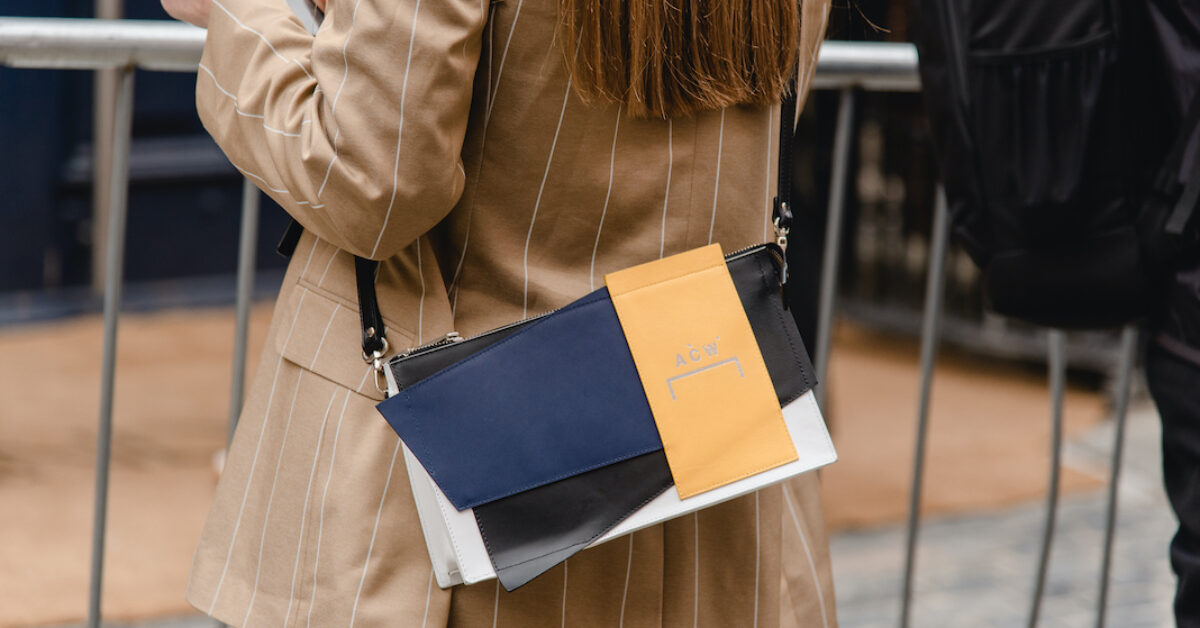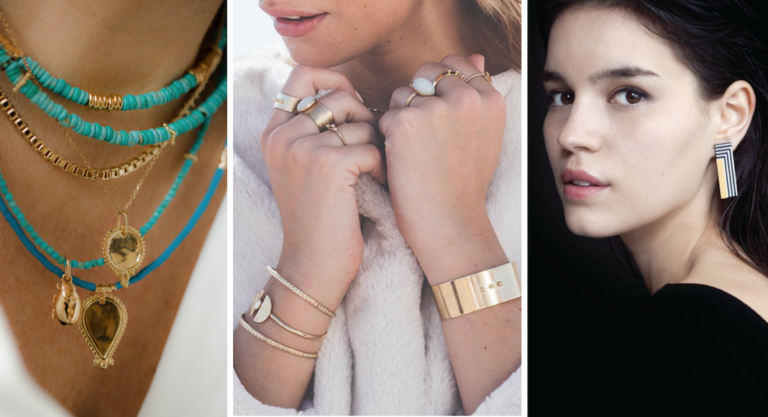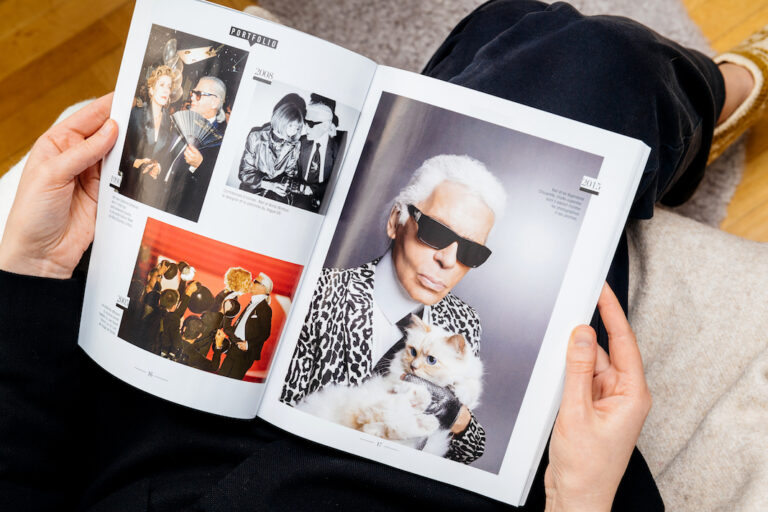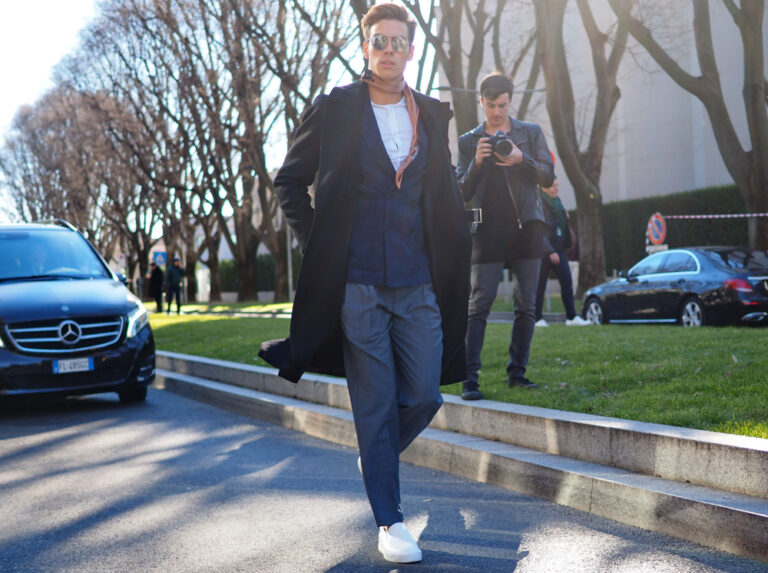Antique trench coats and petticoats transformed into dresses, tops made with plastic bags and gloves sewn together… This is what was at the most recent Fashion Week, but rather the collections imagined more than thirty years ago by Martin Margiela. On recycling and reuse, as on many other subjects, the Belgian designer was a few decades ahead of his time. What used to be called “hybrid” has a new name today: “upcycling,” i.e., creating from existing materials — in this case, for fashion, with other clothes and scraps of fabric. A few years ago, the practice could evoke an end-of-year fashion-design school exercise; today, it is a phenomenon that appeals to designers with a green conscience (and the whole younger generation that’s influenced by Greta Thunberg) since it allows them to respond to one of the major issues in the industry: textile waste.
According to the Ellen MacArthur Foundation, the industry produces 53 million fibres each year and 70% of clothing ends up in landfills or burned. At a time when the world of luxury goods, like the world of fast fashion, can no longer ignore the challenges of sustainable development, could upcycling be a creative way to combat overproduction? In any case, the volume of these resources is significant since less than 1% of existing materials presently are used to make new clothing, according to the Ellen MacArthur Foundation, not to mention that, since September 2019, a French law prohibits brands from “eliminating unsold stock.” “A few years ago, giving a sweater a second life consisted of patching it up or shortening the sleeves; today, designers take it for its material and transform it into something else. It’s a global movement in design, as we saw with the arte povera of the Campana brothers’ furniture, but also with the petit h by Hermès, both of which have given a new lease on life to materials that were not valued,” noted Barbara Coignet, founder of 1.618, a site dedicated to responsible luxury. These designers are, fortunately, just a few of many engaging with the movement.
https://www.instagram.com/p/B88d34bjx-6/
Unique pieces. After twenty-five years working in the field, notably with Guy Laroche and Céline, Ronald Van Der Kemp, a fabric collector, wanted in 2014 to create his brand, RVDK, to “give back value to clothes.” “When I looked at haute couture pieces from the 1970s and 1980s, I always found them getting prettier and prettier. I like the little imperfections of the handmade from that era.” He then launched a line of half-couture, made exclusively with high-end fabrics recovered from manufacturers, flea markets, vintage stores. “The creative exercise is challenging, because I don’t want the upcycling aspect to be visible. Fashion has to sell dreams, glamour. Our customers love the story behind the brand, but they come above all for the clothes.” This Netherlands native is now the only designer on the haute couture calendar in Paris with entirely upcycled pieces.
It was also personal experience in the industry that pushed Lucille Léorat to enter the eco-responsible niche. After fifteen years as artistic director for French cashmere specialist Éric Bompard, she founded her own brand, Leftovers dits l/overs, which uses scraps to make its collections. The art of accommodating leftovers is like one would do in the kitchen. “I like the constraint of working with a raw material that I didn’t choose,” she explained. “In twenty years, I’ve seen so much surplus in factories. It’s a mandatory industrial parameter: at least 10% of the fabric is set aside because the color doesn’t match or because the roll has been used to run the machines in… These scraps are a headache because they have to be stored, archived. I had access to them because I know these factories well.” She transforms them into mixed pieces, reversible cashmere hoodies, woollen cloth coats or leather bags. But, as an upcylcing designer, you have to get used to the idea that production remains random because it depends on what’s in stock. Thus, when she started making a pair of lamb-leather trousers, Léorat received 35 products in burgundy and 50 in navy blue. For Maroussia Rebecq, pioneer of upcycling, even an alike set of ten is a lot. Most of her creations are unique pieces, the result of crosses between clothing and existing fabrics that inspire her.
https://www.instagram.com/p/B8US64vofcq/
Circularity. “At the turn of the decade, the ideas of a fashion product and ethical creation were incompatible. Now it’s a fundamental trend, which reminds me of the path of organic food, now widespread,” said Rebecq, who founded Andrea Crews. Launched in 2002, the brand has never ceased to revalue what wasn’t and to work from what already exists in an approach that is as artistic as it is political. In Paris, during Nuit Blanche 2018, Rebecq even made upycling the theme of a performance, in partnership with Leboncoin. She is taking fashion circularity a step further, this year deciding to reuse her own stock. “It is a starting material that already has a historical, societal and emotional dimension. And for a designer, it’s the opposite of starting from a blank page!”
While creative upcycling still seemed antinomic a few years ago, it’s becoming one of the new mediums for getting into fashion with minimal effect on the planet. Winner of the 2017 LVMH Award, Marine Serre makes half of its collections with salvaged pieces. Fresh out of Central Saint Martins University of the Arts in London, the French-Israeli Benjamin Benmoyal made a name for himself with his end-of-studies collection made from BBC audio cassette tapes. But other brands have made this step too, like Les Récupérables, Gaëlle Constantini, Coralie Marabelle, Supermarché, Toasties, Salut beauté or even Les Chaussettes orphelines… Many brands are seeking to give a second life to existing products. “It should not be forgotten that it is difficult for a young designer to have access to raw materials, so turning to upcycling can also be practical. And then the younger generation likes nothing so much as finding the good in the old, or even finding something used to buy new,” explained Barbara Coignet.
https://www.instagram.com/p/B5pswCxA0pX/
Upcycling fashion is growing so fast that a multi-brand site was created in 2019: Faume. “Initially, we had eco-responsible brands, but I quickly understood that it was very complex to determine what is responsible clothing because the production chain is fragmented and often international. As 90 percent of a product’s environmental impact is linked to the extraction of the material, I chose to refocus my selection on brands, mostly French, which work with recycled and upcycled materials,” explained Aymeric Déchin, founder of the site. “We can no longer make beautiful things that are not as good for the planet.”
Dumpster. Based on the same observation, the three partners of Rive Droite chose to make their bags with recycled cotton, jeans scraps and end-of-stock purchased in Casablanca, Morocco. “You can’t think that the products cost less to make because the raw material exists. Upcycling requires more processing steps, which means more time and human intervention. It would be more financially beneficial to order fabric from a factory,” noted co-founder Aurélie Jansem. There’s also a change in perception about what has long been considered waste from the textile industry. Daniel Silverstein remembers the dump trucks loaded with scraps collected in the Midtown West neighborhood of New York, the historic stronghold of the garment industry. “It felt like the world was upside down. One day, I went straight to the dumpster to pick it up. I walked away with 18 bags and started sewing.” Under his Zero Waste Daniel label, which is as anti-waste as it is creative, the young American designs tops with patchworks featuring Frida Kahlo and David Bowie, as well as iron-on patches made from every scrap of fabric he collects. “Whatever the size of the scrap, it doesn’t leave the workshop until it’s been used. I don’t leave any trash behind.”
https://www.instagram.com/p/B8ssAWFKuuN/
All these initiatives are giving ideas to the big names in the industry. In November, Patagonia launched ReCrafted, a line handmade in California using leather scraps, and Burberry partnered with Elvis & Kresse to upcycle 120 tons of its leather scraps. In a different vein, A.P.C. is offering a voucher for every pair of jeans returned, an operation called the Butler Worn-Out Series, “an allusion to a time when wearing clothes that were too new wasn’t valued,” said founder Jean Touitou. The French shoemaker J.M. Weston also accepts his customers’ used shoes. “They then go through our repair department at our factory in Limoges, which I call the clinic. We pamper them and removes traces of use just as one would repair an Eames or Prouvé armchair. I got the idea because, for years, I’ve been seeing old pairs of Westons in vintage shops in Japan,” said artistic director Olivier Saillard. Some models of shoes will also be customized that way, i.e., upcycled. “We can no longer consume like we used to. Besides, the consumer has changed faster than the fashion industry; their looking for authenticity, a little extra soul.” Extra soul that you would find in used clothes? It’s quite possible, since according to GlobalData, the secondhand market is expected to double by 2023.
This article was first published on Le Point.
Featured image: Stock Photos from Diana Gerber / Shutterstock






